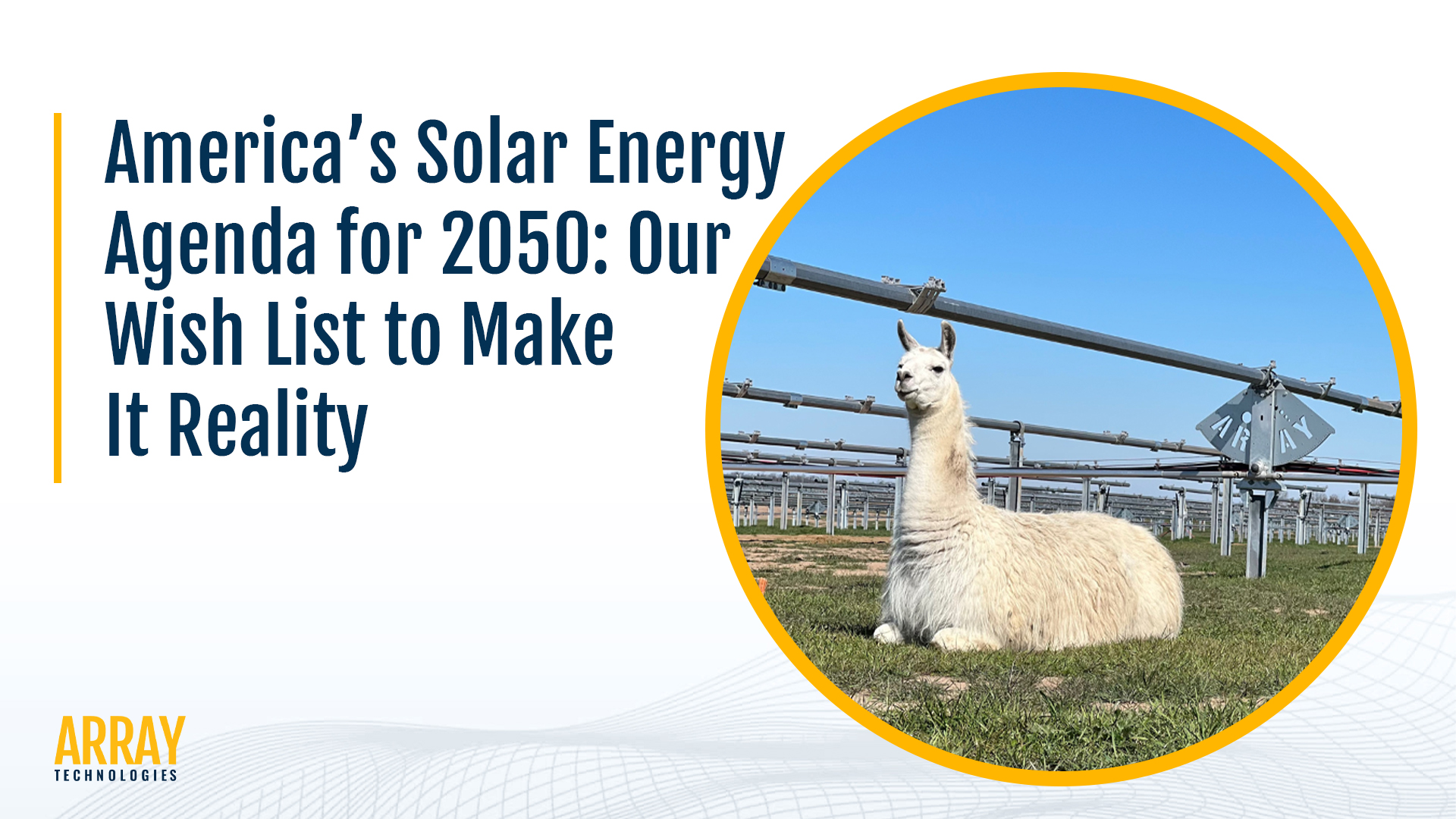
America’s Solar Energy Agenda for 2050
The Biden administration recently announced a goal to produce 45% of US power from solar sources by 2050. To give some perspective, currently, solar power is under 4% of the US power grid but has accelerated at record rates over the past decade.
A blueprint to ramp up and meet these ambitious goals was outlined by the Department of Energy (DOE), projecting that solar power installation would have to be doubled over the next four years, then doubled again by 2030. Put another way, that means installing 30 gigawatts per year of solar capacity between now and 2025, and another 60 GW a year between 2025 and 2030.
That may seem daunting, but the utility-scale solar industry continues to grow at a breakneck pace. In order to reach these ambitious goals, we need to do something much differently than what got us to this point.
Ambitious Energy Goals – Can It Be Done?
After absorbing the DOE Solar Futures study, we do think that solar could ultimately make up 45% of total power generation in the US by 2050. With one massive caveat—you can’t get there without utility-scale solar. This conclusion is also supported throughout the DOE’s report. In other words, rooftop solar alone will not be enough.
This isn’t meant to dimmish the importance of rooftop solar—we support all the many ways solar can power the world with clean energy. But in order to make the massive shift to clean energy and move to a more carbon-neutral scenario, utility-scale solar deployments will be a necessity. And the price of solar has dropped 70% over the last 10 years, making it an ever-attractive and efficient way to deploy clean energy. A government-backed solar proclamation isn’t enough to make it a reality.
There will be lots of challenges, and it will require Herculean efforts like federal investment and major policy change. Unfortunately, money and policy will not be enough. Increasing utility-scale solar capacity will require incredible coordination with utilities, private and public investors, regulators, and more.
Even with all of these challenges, the possibilities of inexpensive, clean energy and ultimately a chance to substantially reduce carbon emissions by 2050 is real—and a future we are excited about. As we look at what is possible for utility-scale solar, there are essential actions that must be taken to clear the way for the short and long-term challenges that lie ahead.
The Biden’s administration’s announcement was a headline we were excited to read, but one that must be coupled with complementary action to drive change. Here are our six wishes to make the 2050 solar goals a reality:
- Creation of a stable regulatory and incentive environment so that the industry can make long term commitments to funding and capital
- Enhancement to the aging power grid so that there are fewer disruptions and consistent power delivered to homes and businesses across the US
- Streamlined permitting for solar so new sites can be identified and deployed faster
- Investment in battery storage technologies which will help to smooth the output of power
- Develop productive trading relationships with international module manufacturers so there is diversity in the supply chain
- Deployment of tax credits. Reuters reported 700+ companies requested long-term extensions of a solar investment tax credit in recent letters to Congress — this extension would “ease project financing challenges” and make the feat ahead of us more feasible.
The Solar Vision for 2050 is an American Story
At ARRAY, we take pride in knowing that the growth of solar means an increase in American jobs. The growth of a clean energy economy will create tens of thousands of jobs for Americans. In 2020 alone, more than 230,000 Americans worked in solar at more than 10,000 companies in every U.S. state. In 2020, the solar industry generated more than $25 billion of private investment in the American economy.
Solar is growing and continuing to put up the big numbers! And ARRAY is a U.S.-based company with U.S. manufacturing capabilities and a significant U.S. supply base. We are excited for the possibilities of how the clean energy economy will change the face of the nation’s carbon footprint and how it will transform the opportunities for American workers.
With a 30-plus year history of developing the world’s most innovative solar hardware and software, we’ve learned that solar is not tied to the outcome of an election or the passage of any one piece of legislation. Solar technology is no longer a fledgling experiment. It has developed into a sector that is beating out other modes of electricity generation and is getting better every day.
Today, we know that the speed to bring power generation online is faster with solar, when compared with wind, natural gas and nuclear. And when considering the consistency in energy delivery and steadiness of output, utility-scale solar comes out on top too.
The Ending Is Just the Beginning
We need an end to the idea that solar is a fad or some partisan point of debate. Utility-scale solar is an economic driver, a carbon neutralizer, a job creator and an electric power producer like no other. Solar provides a way to significantly impact climate change in a way that is financially beneficial to utilities, economically viable and safe for users and environmentally friendly for the planet.
While there are many challenges that lie ahead for the adoption and execution of solar’s future, we remain hopeful. If you are looking for us, we will be over here following the sun…and getting excited about turning vision into reality.
Check out more of our take on the Biden 2050 solar energy plan in this clip from Cheddar News
Click here for other articles by this author



